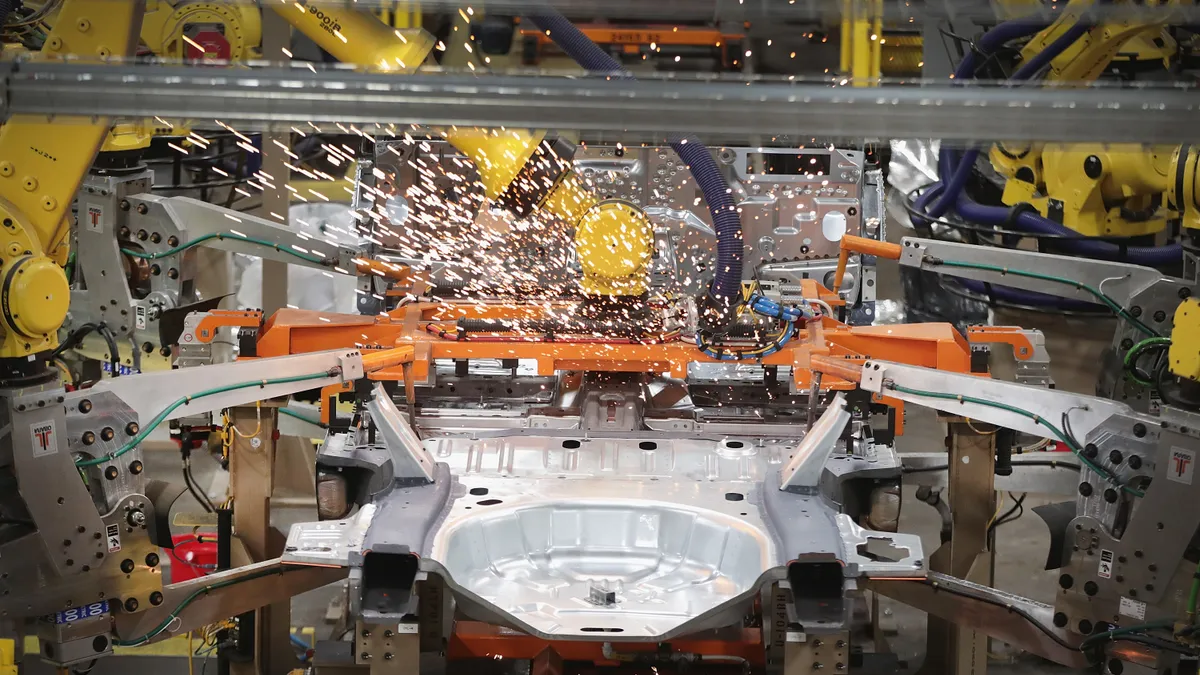The hectic supply chain environment of the last several months has led to suppliers and manufacturers hiking prices for their customers.
Multiple company executives outlined the rising costs and inflationary environment during the latest earnings cycle, along with the strategies they're deploying to cope.
"With rising cost pressures, we experienced declines in gross margin, particularly in Q4,"Clorox CEO Linda Rendle said in a recent earnings call.
But Clorox didn't just let the increase eat into its margins. It also found areas where it could pass the costs along.
"We've implemented our announced price increase on our bags and wraps, and are taking pricing on our food, cleaning and international businesses," Clorox CFO Kevin Jacobsen said.
Meanwhile, 3M is directly working with suppliers to reduce prices, 3M CFO Monish Patolawala said last month.
Buyers who are affected by inflation at the manufacturing level have to decide if they're willing to spend more on their inventory.
"Anytime we see inflation that we think is irrational, we just won't spend into it," Wayfair CEO Niraj Shah said earlier this month.
With higher costs, an increasingly common occurrence, some price hikes will have to be absorbed. And Shah said Wayfair's customers seem willing to foot the bill.
"We're working with our suppliers to pass through some of these higher costs, while paying close attention to our customers reactions to higher prices across all of our classes," he said. "So far, we believe customers are generally absorbing the higher prices reasonably well, though the operating environment is admittedly very fluid."
The cost increases are driven by a number of factors, including an uptick in labor costs, more expensive transportation and a rise in commodity prices resulting from high demand, according to KPMG National Manufacturing Sector Leader Brian Heckler.
The factors contributing to rising costs appeared well before the latest earnings cycle. A study in June, the National Association of Manufacturers' Outlook Survey, found that nearly 87% of respondents consider the higher prices they're paying to be a primary business challenge.
Respondents varied on what tactics they're using to deal with the cost increases. About 57% of respondents said they're passing some cost onto the consumer, 55% said they're reducing profit margins and 46% are reevaluating suppliers.
Manufacturers pass along costs, lower margins
The Institute for Supply Management's Pricing Index hit its highest point ever in June. The July reading still showed prices were increasing, just at a slower rate. All 18 industries tracked by ISM reported higher prices in July than June.
"Material costs continue to rise, and supplies are sometimes delayed. Labor issues are still affecting us the most with finding proper labor," one respondent to the July ISM survey who worked in miscellaneous manufacturing said.
Another respondent in the computer and electronic products industry also said they were passing along higher costs to their customers.
Passing costs on to the next buyer in the supply chain, whether it's another business or the final customer, is the primary goal for manufacturers. But this could be less attractive for companies that try to keep pricing competitive to retain or gain market share, Heckler said.
Not all cost increases are inevitable, either. Buyers always have the ability to negotiate with suppliers and manage inflationary pressures with tools like surcharges that can later be removed and requiring suppliers to provide a cost breakdown.
If companies are unable to pass the cost along, they consider tactics such as alternative suppliers, automation or shuffling of the SKU mix, he said.
Companies that look at shifting suppliers, they'll need to consider the cost of switching. Some companies could be looking to near-source suppliers when possible in the current market in an attempt to cut down on transportation costs, Heckler said.
"And then, you know, an even more important soft cost [right now] is reliability," he said. "How reliable is your source's supply?"
This story was first published in our weekly newsletter, Supply Chain Dive: Procurement. Sign up here.















